What Is The Best Microphone For Online Courses?
 Platform Review
Platform Review

Learn what are some of the best budget microphones and accessories that you will need to record professional-sounding online courses.
And as you might already know, the most important piece of equipment that you need for creating online courses is by far a good microphone.
You see, your students can be extremely forgiving when it comes to video quality.
The main thing that they are interested is in the actual information that you are teaching them, after all.
But bad audio?
That's a deal breaker for almost everyone, so you can't afford that.
You just need a decent microphone, in order to make your course sound professional. I think this is non-negotiable for your students.
But you also don't want to overspend hundreds or thousands of dollars on professional studio equipment that you just don't need at all.
All you really need is a decent USB-powered microphone that fits your budget, and that's it. 😉
So what's the catch?
The catch is that you will need different microphones for different recording situations.
Recording a screencast is something very different from recording a yoga class, for example, so you will need different equipment for different situations.
I am going to cover in this post what microphone you should use for 3 different recording situations:
- Screencast recordings, where you film your computer's desktop
- Personal recordings, for example, when you film yourself talking while sitting on a couch
- Recordings with a lot of movement, for example, if you are filming a sports class. Or in general, if you need to have your hands free, and not be bothered by wires.
So what is the best microphone for online courses?
Here are the best budget microphones for online courses that are USB-powered and well adapted to different recording situations:
- For screencast recordings, the Samson Q2U is a great microphone
- For personal recordings, the SAMSON Meteor is a great match
- for recordings on the move, the Micfy wireless fits the bill
In this list, I have given you some budget options.
But in this post, I will also give you a mid-range option and a high-end option for each category, so that you have multiple choices.
I will also talk about some useful accessories that you likely want to get too.
Note that the mentions of specific brands or products in this post are not sponsored.
You can also check out all the free guides that you have available here at the Course Creator Academy by clicking on the Academy link on the top menu bar.
If besides a microphone, you are looking for other types of equipment needed to create online courses, check out this complete guide that I wrote:
Affordable Online Course Equipment - Complete Guide
And if you are specifically looking for a camera for recording your courses, you can check out this post: What Is The Best Camera For Online Courses?
Best microphone for screencasts
A screencast is one of the most effective techniques you have available to recording online courses.
You just record your computer screen, for example when you are using an application that you want to teach. Or you can also show a powerpoint presentation.
The key thing is that you will also record your voice together with the screen, and that combination of audio and video will be the screencast.
So, which is the best microphone for a screencast?
A desktop directional microphone of any kind is great for recording screencasts because it will focus on recording the voice and ignoring the background noise.
The name directional kind of says it all, this type of microphone is going to focus on capturing the sound that comes mostly from one direction only.
For example, in my home recording studio I use a directional microphone, the iRig HD 2. I've been using it for years now and it works great.
One of the reasons it works so well is that it picks up my voice very clearly, while at the same time reducing a lot of outside sounds like cars passing on the street, the tram, etc.
Notice that if the outside noise is too loud, the directional microphone will still catch it, so it's not a silver bullet that will compensate for all noisy recording conditions.
But even though it does not perfectly eliminate sounds from other sources, a directional microphone will still save you a lot of recordings that you would otherwise have to reshoot due to noise.
So if you are doing screencasts, directional microphones are 100% the way to go.
Most affordable: Samson Q2U Dynamic Microphone
The Samson Q2U is a great dynamic mic for screencasting. It's got a really clear sound, and it's very easy to use.
It has a cardioid pickup pattern, which means that it rejects sound from the back and sides of the mic, making it ideal for capturing voice in a noisy environment.

It also has a built-in headphone jack that allows you to monitor your sound with zero latency, which is perfect for creators.
Plus, it's affordable, so it's a great option for budget-minded course creators.
The Samson Q2U has a built-in USB interface that lets you connect directly to your computer or laptop, making it easy to start recording right away.
Why the Samson Q2U Dynamic Microphone is ideal for course creators
When it comes to microphones, there are a lot of choices out there. So, what makes the Samson Q2U such a great choice?
Well, for starters, it's versatile. This mic can be used for everything from vocals to instruments to podcasts. It also has an affordable price tag, which is great for anyone on a budget.
But my favorite thing about the Q2U is its portability. It's small and lightweight, so it's easy to take with you wherever you go.
Plus, it comes with a carrying case, which is great for protecting your mic.
Pros and Cons
So, what are the pros and cons of the Samson Q2U?
Well, on the plus side, it's a versatile microphone. You can use it for course creation, vocals, speech, instruments, and even podcasting. It's also easy to use just plug it into your computer or recording device and you're good to go.
Plus, it’s built to last and delivers clear accurate sound quality. It's also easy to use, so you can start using it right out of the box.
The downside is that it doesn't have a lot of features. You can't adjust the gain or the EQ, and there's no shock mount included. But overall, it's a great value for the price.
If you're looking for a great dynamic mic that won't break the bank, the Samson Q2U is a great option.
Mid-range: Rode PodMic Cardioid Dynamic Broadcast Microphone
If you're looking for a great microphone for screencasting, the Rode PodMic Cardioid Dynamic Broadcast Microphone should be at the top of your list.
This microphone is designed for course creation, voiceover, podcasting, and other forms of voice recording. It delivers clear, crisp sound with minimal noise interference.
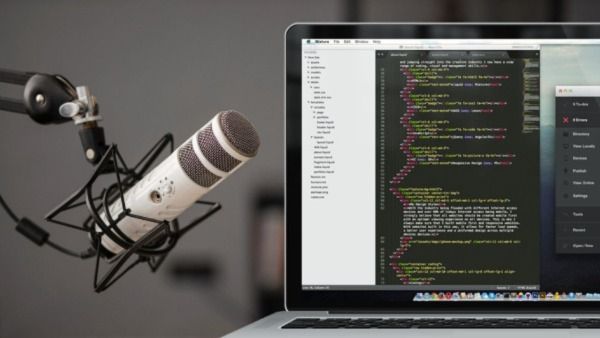
The Rode PodMic is also built tough, with a durable steel body that can take a beating. Plus, it comes with a handy carrying pouch and a mic clip, so you can take it with you wherever you go.
More than that, it's incredibly sensitive, so you'll get great sound quality no matter what type of content you are recording.
Why the Rode PodMic is ideal for course creators
It also has a cardioid pickup pattern, which means it'll reject sound from the sides and rear, and focus on the sound in front of it.
This is perfect for eliminating any ambient noise and making sure your voice is clear and crisp.
Its low noise and high quality make it ideal for capturing your voice in any environment, and its durability means you can take it with you wherever you go.
The PodMic also has a low impedance, which means it can handle a lot of power without distortion. And to top it all off, it's really easy to use, you just plug it into your computer or audio recorder and you're good to go.
Finally, there's durability. This microphone is built to last. It's made from rugged zinc alloy and features an anti-shock mount that protects it from bumps and falls.
If you're looking for a reliable mic that will give your audio recordings that extra bit of polish, then this is the one for you.
High-end: Blue Yeti Nano USB Microphone for PC
This microphone is a favorite among online course creators because it's so versatile.
It's super easy to set up, you just plug it in and you're ready to go.
It has a really sleek design and it's really easy to use. Plus, it's got a ton of features that makes it perfect for anyone who wants to start screencasting.
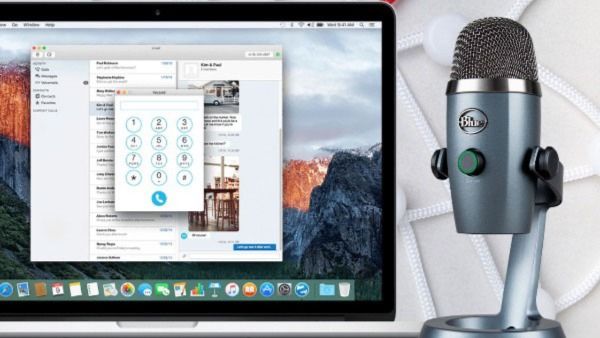
It is packed with features that make it a powerful tool for recording high-quality audio.
But what makes the Blue Yeti Nano so special?
The Blue Yeti Nano is a plug-and-play microphone that's perfect for recording online courses, and more. Just plug it into your computer and start recording.
It's also compatible with Windows, Mac, and Linux, making it a great choice for anyone looking for a versatile microphone.
Plus, the design is super sleek and compact, making it the perfect travel companion. So if you're in the market for a top-notch USB microphone, the Blue Yeti Nano is definitely worth considering.
Why the Blue Yeti Nano is ideal for course creators
It has four different recording modes; cardioid, bidirectional, omnidirectional, and stereo, so you can tailor your recording to your specific needs.
It also has an impressive zero-latency headphone jack, which means you can listen to your own recordings in real time and make any necessary adjustments.
The mic has a frequency response of 20Hz-20kHz, and it can handle sound pressure levels of up to 136dB.
And it comes with a built-in stand, so you don't have to worry about finding a place to put it.
Overall, the Blue Yeti is a great option for anyone who wants a great microphone that's both high quality and easy to use.
All these microphones are great for screencasts, but what if you are creating a woodworking class, or a basketball course?
Best Microphone For Personal Recordings
Even though screencasts are a very common way of recording online courses, sometimes they are not the right choice for the job.
You might want to show up on camera for long periods of time away from your computer, to build rapport with your audience.
In those situations, a desktop directional microphone might not be ideal, so let's see what alternatives you have available.
One simple alternative is to use what is known as a Lavalier microphone.
What is a Lavalier Microphone?
A Lavalier microphone is a very small microphone that you can clip unto clothing, and it's hardly noticeable when you wear it.
They’re also known as clip mics, lapel mics, or tie mics because they can be clipped onto various pieces of clothing, or hidden on a person’s lapel or tie.
A lavalier mic is a perfect way to record high-quality audio for personal use or professional video production because they capture sound from a single source.
So Lavalier microphones are also a type of directional microphone, but just much smaller and usually with a very long wire.
These microphones can deliver great sound, because they can be positioned very close to your mouth.
They are also unobtrusive and allow complete freedom with your hands.
As a general rule, Lavalier mics are positioned on the chest, about a handspan distance from the mouth, while the other end is plugged into your phone or computer. This will give a clear and natural sound.
So what are some nice Lavalier microphones that you could use?
Most affordable: PoP voice Upgraded Lavalier Microphone
The PoP voice upgraded Lavalier microphone is a low-priced microphone that’s great for personal use.
It is a professional-grade microphone that’s perfect for course creators.
This is a clip-on microphone with a long cable, which gives you plenty of flexibility when it comes to positioning.
With this mic, you'll be able to capture every detail of your recordings with stunning clarity.
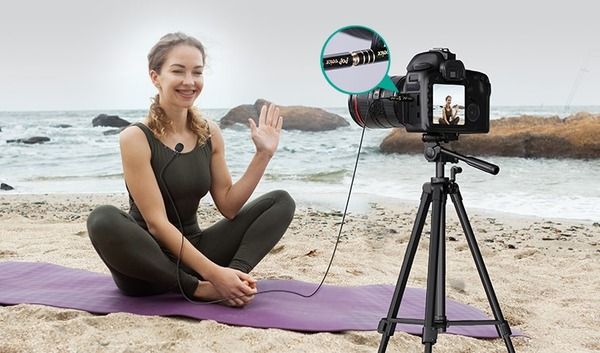
Why the PoP Voice Upgraded Lavalier Microphone is ideal for course creators
It's made with high-quality components, so it delivers clear distortion-free sound.
It has a built-in headphone amp. This means you can actually listen to your own voice while you're recording, which is a huge help in terms of quality control.
You can also adjust the levels on the fly, which is really handy if you're doing an interview and one person is louder than the other.
The microphone also has a built-in limiter, which helps to protect your audio from clipping or distortion.
It's affordable. You can get the PoP Voice Upgraded Lavalier Microphone for a fraction of the cost of other microphones on the market.
If you're looking for a better way to record audio, the PoP voice Upgraded Lavalier Microphone is the way to go. It picks up every detail, so your voice will sound clear and natural, even in noisy environments.
Overall, the PoP voice upgraded Lavalier microphone is a great choice for anyone who wants a quality lavalier mic on a tight budget. And it comes with a nice carrying case to keep it safe when you're not using it.
Mid-range: Rode Lavalier Go Professional Microphone
When it comes to recording voice for your courses, there's no better mic than the Rode Lavalier Go Professional Microphone.
The Rode Lavalier Go Professional mic gives you the power to capture your voice in crystal-clear quality, making it a great microphone for online course creators.
It's also durable, and the built-in mute button is a nice touch. It comes with a range of accessories, including a clip, windscreen, and pouch.
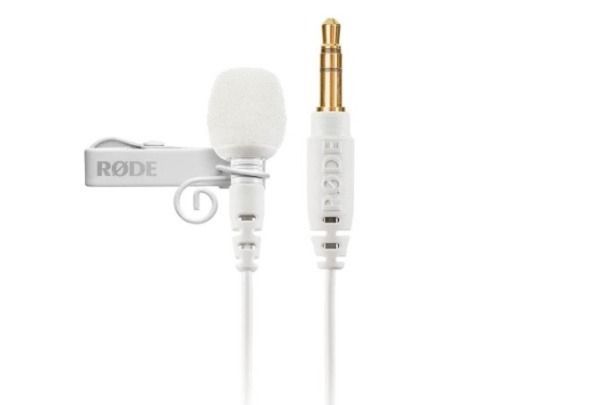
Why the Rode Lavalier Go Professional Microphone is ideal for course creators
For starters, it has a broadcast-quality audio output that's perfect for capturing high-quality audio.
It's also really easy to use, which is perfect for those times when you need to set up and record quickly. You just plug it into your computer or phone and hit the record button.
Plus, it's super lightweight and discreet, so you can easily take it with you wherever you go.
The microphone has a frequency range of 20 Hz to 20 kHz, which means that it captures a wide range of sound. And the cardioid polar pattern ensures that your recordings will be crystal clear, with minimal background noise.
It records in both stereo and mono. It also has a clip that makes it easy to attach to your clothing, so you don't have to worry about holding it the whole time.
All in all, it's a great option for anyone looking for a not-so-expensive lavalier mic that still delivers great-quality sound. And if you're looking for a microphone that's built to last, the Rode Lavalier is definitely worth checking out.
High-end: TASCAM Lavalier Microphone
The TASCAM Lavalier Mic is great for personal use and a good fit for course creators.
It comes with a variety of accessories that make it perfect for a range of applications. This includes a lapel clip, windscreen, and carrying case.
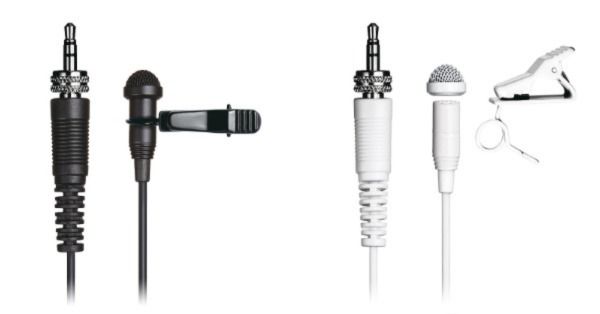
Why the TASCAM Lavalier Microphone is ideal for course creators
The TASCAM Lavalier Microphone is easy to use. It has a flexible clip that you can adjust to fit the collar of your shirt, and it has a built-in battery that provides up to eight hours of use on a single charge.
It has a cardioid pickup pattern, which means it's great for capturing audio from a single direction. It also has a frequency response of 50 Hz to 18 kHz, so it can capture a wide range of sounds.
The TASCAM Lavalier Microphone is also incredibly durable. It's made from tough metal and has a cable that's protected by Kevlar, which means it can stand up to even the most strenuous conditions.
This mic is perfect for course creators because it captures vocals clearly and picks up background noise minimally. The Lavalier also has a low-cut filter, which eliminates wind and environmental noise.
And because it's so lightweight, you can wear it comfortably for long periods of time.
The TASCAM Lavalier Microphone has a 3.5mm mini jack connector, which is the most common type. You can use it with a range of devices, including digital audio recorders, camcorders, and smartphones.
Once you've connected it to your device, make sure the levels are set correctly. The TASCAM Lavalier Microphone is very sensitive, so you don't need to have it up high in order to get a good recording.
In fact, if the levels are set too high, you'll end up with distortion and noise.
What's the bottom line? The TASCAM lavalier microphone is a top-quality product that is perfect for anyone looking for a high-quality microphone that is easy to use and portable.
Best Microphone For Free Hands and Movement
Wireless mics are the best choice if you want to move around freely while you record, for example, to record a Yoga class, or some other type of sports class.
Most Affordable: Micfy Wireless Microphone
The Micfy wireless microphone is a great choice for anyone looking for an affordable wireless microphone system that's easy to use and set up.
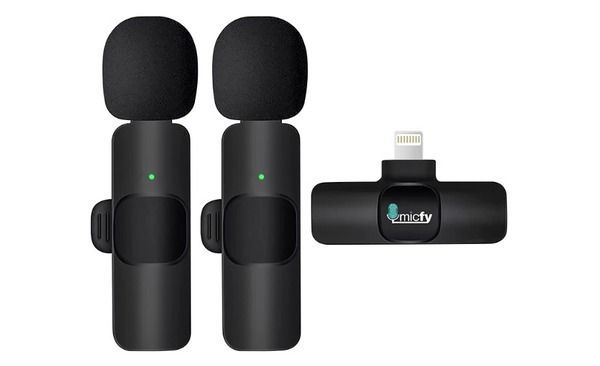
It has a built-in headphone jack, so you can listen to what you're recording in real-time, and it also has a mute button so you can quickly silence yourself if need be.
Why the Micfy Wireless Microphone is ideal for course creators
It has a built-in rechargeable battery, with a battery life of up to 4.5 hours of operational time with only a 2-hour charging time.
Simply connect the plug-and-play microphone to your computer port and turn it on.
No Bluetooth or software is required. Once the connector is found, your microphone will automatically pair.
When you're using a Micfy Wireless Microphone, you're able to take your sound quality to the next level. There's no need for cords or any type of wired connection.
The receiver has a range of up to 100 feet, so you can move around comfortably without losing any sound quality while you're recording.
Mid-Range: AUXCO Wireless Lavalier Microphone
The AUXCO Wireless Lavalier Microphone is an easy-to-use, small, lightweight microphone that is great for long-range, low-latency audio transmission.
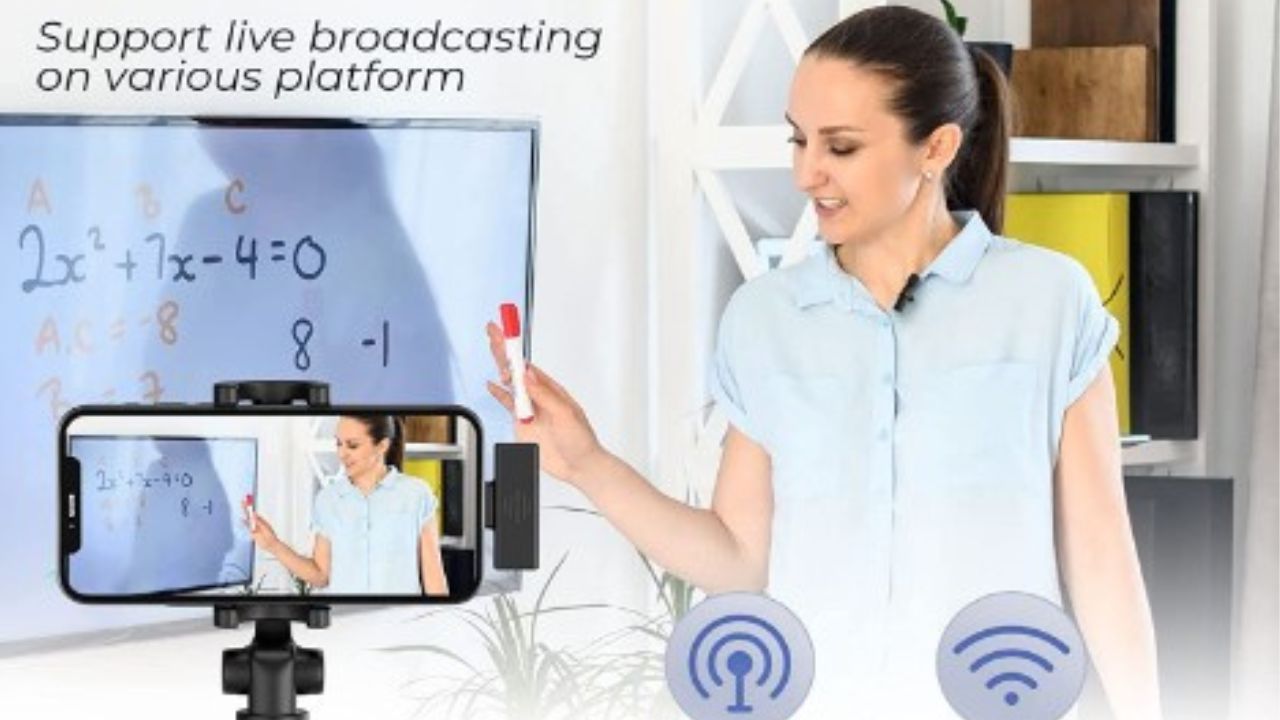
It features a receiver and a transmitter, which are compatible with each other and can be used together or separately.
This means that you don't have to spend extra money on additional components in order to get the most out of your system.
The wireless receiver plugs into an available sound card port on your computer or laptop.
Why the AUXCO Wireless Lavalier Microphone is ideal for course creators
1. The AUXCO Wireless Lavalier Microphone is easy to use.
2. The sound quality is impeccable.
3. It's compatible with most devices.
4. The setup is incredibly easy. You can be up and running in minutes.
5. The mic is discreet and lightweight, so it's great for traveling.
This tiny little microphone packs a powerful punch, and it's perfect for recording high-quality audio in any environment.
High End: RODE Wireless Go
RODE Wireless Go is the perfect wireless microphone for content creators, especially for filming something like a fitness class.
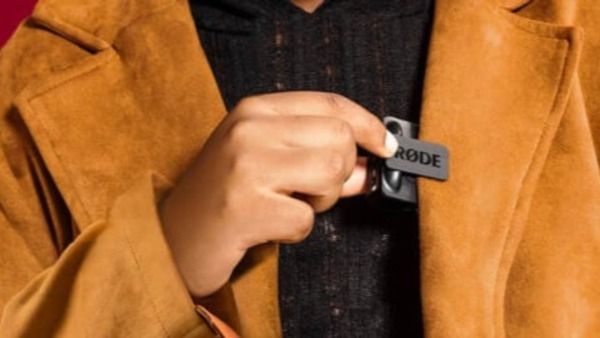
The sound quality is top-notch and can be adjusted to best fit your tone of voice.
The clip makes it easy to place the mic anywhere on your body.
RODE also offers different receivers depending on whether they're being used with iPhones or Android devices.
Why the RODE Wireless Go is ideal for course creators
It has a range of up to 100 meters, so you can capture audio from a distance.
It is an omnidirectional lavalier microphone that provides clear, crisp sound, and it's simple to use, just plug it into your laptop, smartphone, or tablet and start recording.
The RODE Wireless Go is a great choice for anyone who needs quality audio but doesn't want to be weighed down by a lot of equipment.
Plus, it's super easy to use. There's no need to fuss with cords or cables, just turn it on and start recording.
The RODE Wireless Go also has a built-in headphone jack, which means you can listen to your recordings in real-time, without having to plug in any extra headphones.
It has a long battery life, so you can record for hours without having to worry about running out of power.
The RODE Wireless Go is the perfect microphone for anyone looking for a high-quality, portable option.
With its compact design and great sound quality, the Wireless Go is perfect for course creators who need to capture high-quality audio on the go.
Microphone Accessories That You Might Need
Besides the microphone itself, you will most likely also need some of the following accessories to help you record the best possible sound.
Some of these accessories will be absolutely essential for you, depending on the situation.
Pop Filter
A pop filter is an essential accessory for desktop directional microphones.
Pop filters are used to reduce the amount of noise that can occur when you speak into a microphone, and pronounce the loud "p" sound.
The "p" sound creates an airwave that if it hits the microphone directly, it will cause distortion and an unpleasant listening experience.
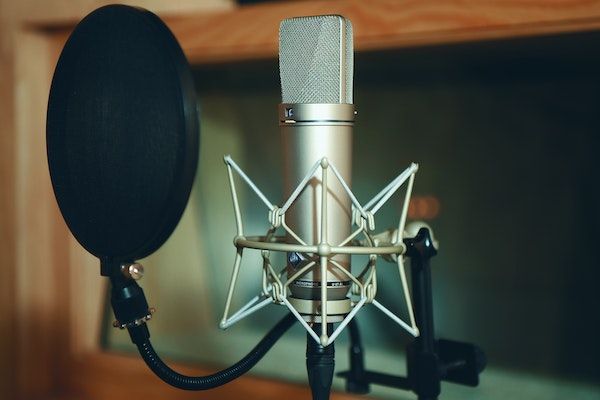
Pop filters work by absorbing the sound wave before it reaches the microphone, which results in a much cleaner sound.
A pop filter is a must-have if you want to get the best sound quality possible. A great choice is for example the Blue Yeti Pop Shield.

Microphone Deadcat
When you're using a microphone in an outdoor scenario, there's always the possibility of accidental wind noise.
And that can really mess with the quality of your recording. But with this accessory, you can reduce a lot the wind noise, and still get great quality sound:
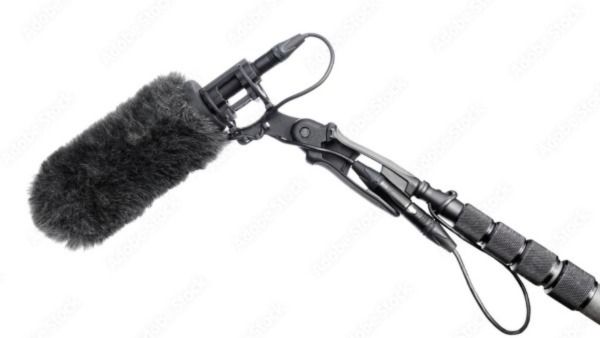
Enter the deadcat.
This is a furry windscreen that goes over the microphone and helps to reduce wind noise. It's not a perfect solution, but it will make all the difference between being able to record outside or not, on most days.
The deadcat works simply by keeping the wind from hitting the microphone directly and causing noise and distortion.
Microphone Stand
When it comes to microphone stands, there are a ton of different options to choose from. So, which one should you go for?
The first thing you need to decide is how tall you want your stand to be. This will depend on the height of the person using it and the type of microphone they're using.
Next, you need to decide on the type of stand. There are two main types: tripod and boom.
Tripod stands are generally more compact and easier to transport:
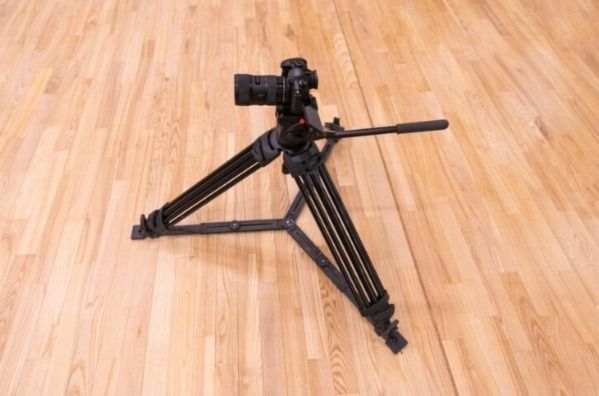
While boom stands give you more flexibility in terms of positioning the microphone.
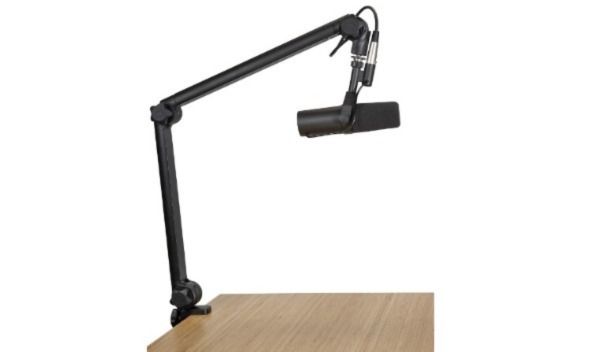
Finally, you need to think about the materials. Tripod stands can be made from metal or plastic, while boom stands are typically made from metal.
Conclusion
So what is the best microphone to record online courses?
Here are the best microphone types, depending on the situation:
- For screencasts, a directional desktop microphone is perfect, because it will help you eliminate some of the outside noise.
- For personal recordings, a Lavalier microphone works great, because it's discreet and it's hard to tell you are wearing it.
- For recordings that require a lot of movement, a wireless microphone is ideal.
In general, you don't need anything with external power. In fact, that is usually a good sign that you are overspending.
A good USB-powered microphone should be all that you need for your course recording needs, so I hope that this post will help you choose the right microphone for you.
If you want to know more about creating great online courses, check out this in-depth guide that I wrote:
How To Create an Online Course (Complete Guide, includes Free PDF).
And if you looking to dive deeper into the marketing side of course creation, you don't want to miss my guide on that:
How to Sell Online Courses? The Ultimate Guide
Let me know if you have any questions, and enjoy the course creation process.
Vasco Cavalheiro
OnlineCourseHost.com Founder & Online Course Creator








 Start Here
Start Here Course Creation Journey Step by Step
Course Creation Journey Step by Step  Course Creation Software Reviews
Course Creation Software Reviews Online Course Marketing
Online Course Marketing Course Creation Tips & Tricks
Course Creation Tips & Tricks Course Equipment
Course Equipment Online Course Marketplaces
Online Course Marketplaces Revenue Reports
Revenue Reports Best Practices
Best Practices Frequently Asked Questions
Frequently Asked Questions Platform Reviews
Platform Reviews